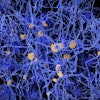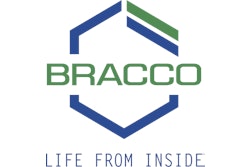German pharmaceutical firm Bayer has reached agreements in principle on "several" pending lawsuits from patients who allege they developed nephrogenic systemic fibrosis (NSF) after having been given the company's Magnevist MRI contrast agent.
Bayer is one of four companies that are defendants in more than 400 lawsuits related to gadolinium-based MRI contrast agents and their possible connection to NSF. The other companies are Bracco Diagnostics of Princeton, NJ, with its ProHance and MultiHance agents; GE Healthcare of Chalfont St. Giles, U.K., with its Omniscan product; and Mallinckrodt, a division of Covidien of Hamilton, Bermuda, which markets OptiMark.
Bayer spokesperson Marcy Funk confirmed that the parent company of Bayer HealthCare Pharmaceuticals of Wayne, NJ, has reached agreements in principle with several of the plaintiffs in the U.S. to settle, without an admission of liability, claims against Magnevist. Funk could not confirm the number of cases Bayer is negotiating or has settled.
"Bayer will, at times, consider the option of settling litigation on a case-by-case basis without admission of liability," Funk said. "We have, at this point, no way of knowing whether more cases will be filed."
On April 15, a report from Bloomberg news service cited attorney Peter Burg with the law firm Burg Simpson Eldredge Hersh Jardine in Englewood, CO, as saying that Bayer had begun negotiations in approximately 40 cases linking the product to NSF.
Funk noted that there currently are 265 Magnevist-related cases pending in the U.S. District Court for the Northern District of Ohio. Of those pending lawsuits, Bayer has been dismissed from 80 cases, Funk said, "because the plaintiffs either did not use Bayer's Magnevist or the plaintiff did not actually develop NSF."
Last month, U.S. District Court Judge Daniel Polster scheduled the first of four trials to begin in January 2010, scheduling the starts for January 15, March 1, April 15, and June 1.
Before the trials begin, the litigants will select 10 cases to undergo early discovery. Those 20 cases will be narrowed to 10, with five cases chosen by the plaintiffs and five chosen by the defendants. Defendants and plaintiffs then will select two cases from each other's list for the first four trials.
By Wayne Forrest
AuntMinnie.com staff writer
April 17, 2009
Related Reading
NSF trials to begin early next year, March 27, 2009
JHU study: Screening patients prior to MRI lowers NSF risk, February 4, 2009
ACR committee works toward gadolinium-based contrast policy, October 24, 2008
NSF trial proceeds past status conference, September 30, 2008
Incidence of nephrogenic systemic fibrosis varies with contrast agents, July 24, 2008
Copyright © 2009 AuntMinnie.com


.fFmgij6Hin.png?auto=compress%2Cformat&fit=crop&h=100&q=70&w=100)





.fFmgij6Hin.png?auto=compress%2Cformat&fit=crop&h=167&q=70&w=250)











